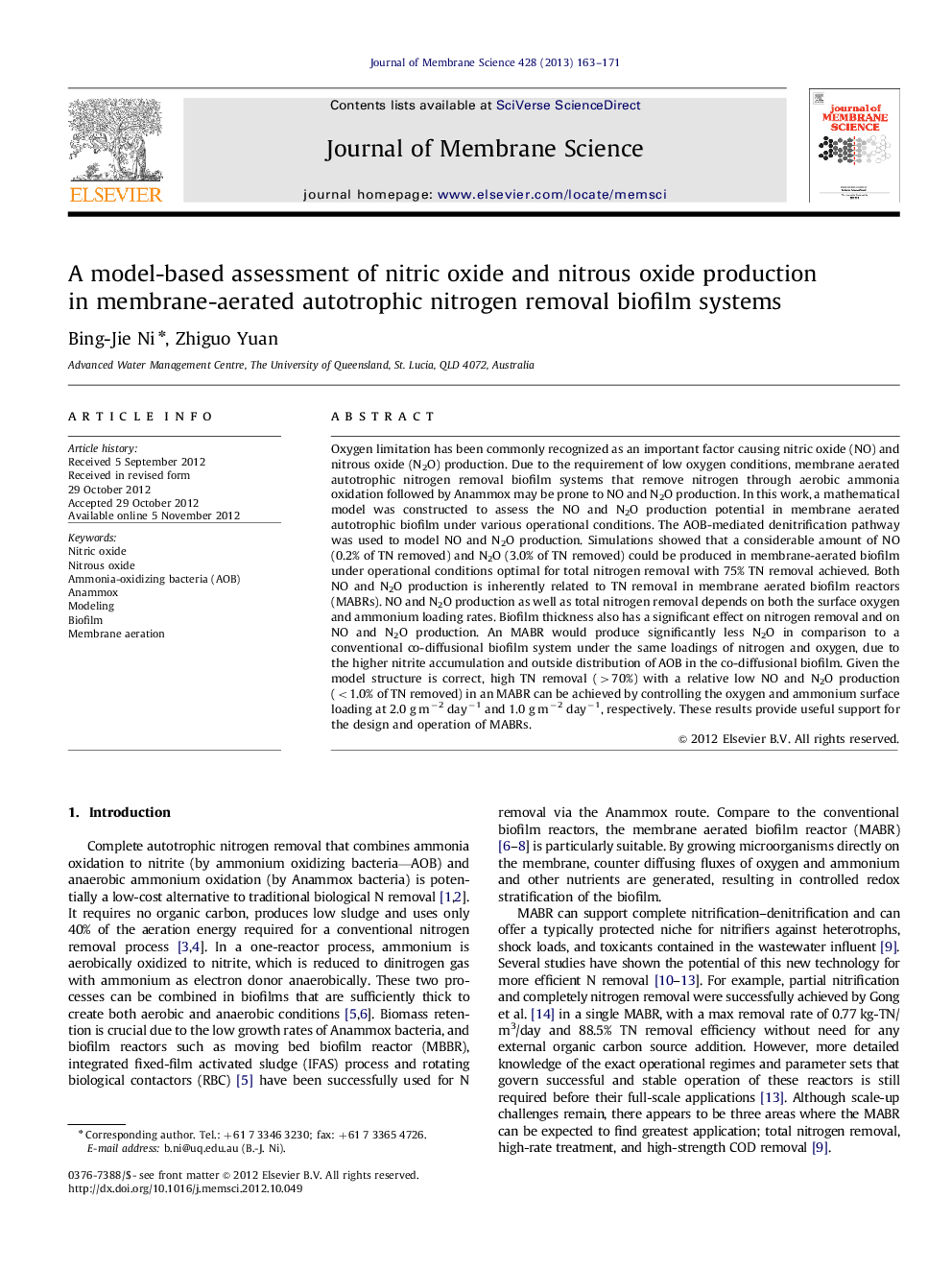| Article ID | Journal | Published Year | Pages | File Type |
|---|---|---|---|---|
| 634607 | Journal of Membrane Science | 2013 | 9 Pages |
Oxygen limitation has been commonly recognized as an important factor causing nitric oxide (NO) and nitrous oxide (N2O) production. Due to the requirement of low oxygen conditions, membrane aerated autotrophic nitrogen removal biofilm systems that remove nitrogen through aerobic ammonia oxidation followed by Anammox may be prone to NO and N2O production. In this work, a mathematical model was constructed to assess the NO and N2O production potential in membrane aerated autotrophic biofilm under various operational conditions. The AOB-mediated denitrification pathway was used to model NO and N2O production. Simulations showed that a considerable amount of NO (0.2% of TN removed) and N2O (3.0% of TN removed) could be produced in membrane-aerated biofilm under operational conditions optimal for total nitrogen removal with 75% TN removal achieved. Both NO and N2O production is inherently related to TN removal in membrane aerated biofilm reactors (MABRs). NO and N2O production as well as total nitrogen removal depends on both the surface oxygen and ammonium loading rates. Biofilm thickness also has a significant effect on nitrogen removal and on NO and N2O production. An MABR would produce significantly less N2O in comparison to a conventional co-diffusional biofilm system under the same loadings of nitrogen and oxygen, due to the higher nitrite accumulation and outside distribution of AOB in the co-diffusional biofilm. Given the model structure is correct, high TN removal (>70%) with a relative low NO and N2O production (<1.0% of TN removed) in an MABR can be achieved by controlling the oxygen and ammonium surface loading at 2.0 g m−2 day−1 and 1.0 g m−2 day−1, respectively. These results provide useful support for the design and operation of MABRs.
Graphical AbstractFigure optionsDownload full-size imageDownload high-quality image (222 K)Download as PowerPoint slideHighlights► Productions of NO and N2O in MABR are 0.2% and 3.0% of TN removed. ► NO and N2O productions inherently correlate to TN removal in MABR. ► NO and N2O productions depend on biofilm thickness, surface oxygen and ammonium loading rates. ► High TN removal with a relative low NO and N2O production can be achieved. ► MABR produces significant lower N2O than a conventional biofilm system.
